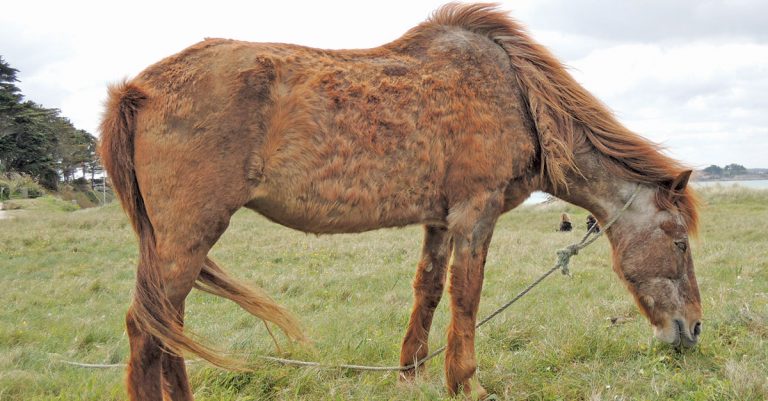
Photo: Wikimedia Commons
Cushing’s syndrome was named after an American neurosurgeon, Dr Harvey Cushing, who described a relationship between a hormonally-linked disease syndrome and tumours of the pituitary gland in his patients.
Later, it was discovered that there were other causes for the syndrome, including excessive use of corticosteroids, in both humans and dogs.
When similar symptoms of adrenocorticotropic hormone (ACTH) excess were seen in horses, the syndrome was initially called Cushing’s. It was recently renamed pituitary pars intermedia dysfunction (PPID), as it is seldom the result of a pituitary tumour.
Signs of PPID in horses are mainly related to hormones that are increased by excessive ACTH, for instance cortisol, which is a steroid produced by the adrenal glands. While PPID is the most common hormonal disease in elderly horses, it is almost never found in horses younger than five years old.
Signs of disease
Typical signs that your horse has advanced PPID include a long and often curly coat that is not shed in summer; muscle wasting; sway back; swollen abdomen; eye infections and ulcers; laminitis; and increased thirst and urination. Affected horses appear dull and lazy, and their knees, hocks and fetlocks often look slightly over-bent, as tendons and ligaments become slack.
Abnormal fat deposits can also be seen, for instance above the eyes and behind the withers. In early cases, the diagnosis is not easy. Affected breeding mares and stallions can become infertile, and mares can develop uterine infections.
Excessive cortisol stimulates the production of prolactin, the hormone that regulates lactation, and mares sometimes produce milk even if they have not foaled, or for a long time after a foal has weaned.
Levels of insulin and ACTH in blood samples are used as diagnostic tests for early cases of PPID. However, recent research shows that PPID is mainly linked to an excess of cortisol in the bloodstream.
This is known to be caused by excessive use of cortisone as a medication, but high levels of cortisol are also found as a result of high ACTH levels.
These high ACTH and cortisol levels can cause insulin resistance and high blood sugar which, in turn, result in increased insulin production. High levels of ACTH and insulin are found in early cases of PPID.
However, several of the early signs of PPID can be confused with another hormonal disease called equine metabolic syndrome (EMS). This syndrome is also often found in horses with laminitis that show insulin resistance and high insulin levels.
Typically, horses with EMS show obesity and excessive fat deposits, particularly in the neck. It is mostly seen when some breeds, such as Arabians that do well under harsh environmental conditions, are fed large amounts of highly digestible carbohydrates. Both syndromes can occur together in older horses.
Medication and dietary changes
Horses diagnosed with PPID are given pergolide mesylate. Your vet may also suggest electrolytes or specific minerals to replace those lost by excessive urination.
If EMS is also present, the horse’s diet must be addressed as well.
You will need to remove grain from its diet and rather feed it a ration balancer and hay that contains more roughage than calories.
As horses with PPID are usually insulin-resistant, grazing on planted pastures and green lucerne or kikuyu should be avoided, as should other ‘sweet’ feeds.
Dr Mac is an academic, a practising equine veterinarian and a stud owner.











